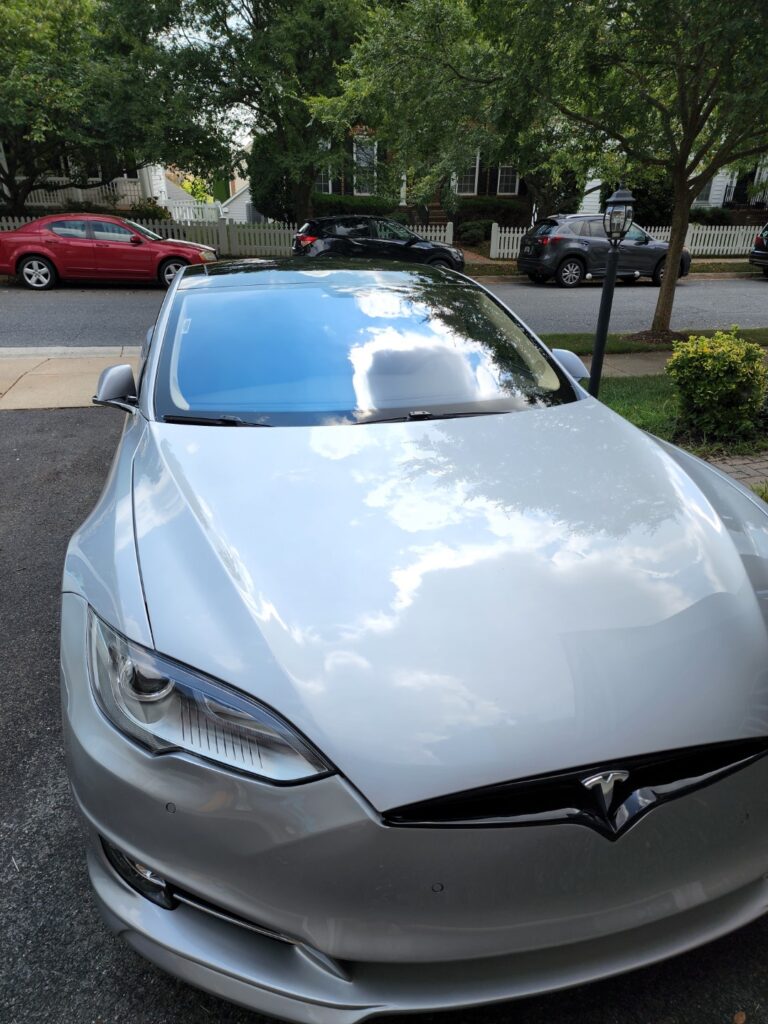
Introduction
Your vehicle faces extreme conditions year-round, from blazing summer heat to freezing winter storms. Ceramic coating is a powerful solution designed to protect your car’s exterior while enhancing its appearance. But how does it handle extreme temperature fluctuations? Let’s dive into the science and real-world benefits.
What Is Ceramic Coating?
Ceramic coating is a liquid polymer applied to a car’s exterior that chemically bonds with the paint, creating a hydrophobic, protective layer. It enhances shine, resists environmental contaminants, and provides superior thermal stability.
The Science Behind Ceramic Coating
The primary component of ceramic coatings is silicon dioxide (SiO2), which forms a semi-permanent barrier on the surface. This barrier is highly resistant to heat and cold, offering long-term protection against environmental damage.
How Ceramic Coating Handles Extreme Heat
High-Temperature Resistance Explained
- Ceramic coatings can withstand temperatures exceeding 1,800°F.
- The protective layer prevents oxidation, fading, and damage from intense sunlight.
- Its non-porous nature minimizes thermal degradation.
How Ceramic Coating Protects Against UV Rays
- UV rays are one of the main causes of paint deterioration.
- The coating acts as a sunscreen, preventing fading and cracking.
- Reduced heat absorption helps maintain a cooler surface temperature.
Performance in Freezing Temperatures
- Maintains flexibility and doesn’t become brittle.
- Prevents micro-cracking due to temperature fluctuations.
- Keeps contaminants like road salt from bonding to the surface.
Preventing Ice and Snow Damage
- Hydrophobic properties reduce ice and snow adhesion.
- Water beads off instead of freezing on the surface.
- Easier removal of frost and ice buildup.
Thermal Expansion and Contraction
- Ceramic coating adapts to thermal changes without cracking.
- Maintains structural integrity in fluctuating temperatures.
- Ensures long-term durability in extreme climates.
Key Benefits of Ceramic Coating in Extreme Climates
- Protects against heat-induced oxidation and sun damage.
- Repels moisture, preventing ice-related damage.
- Enhances overall vehicle longevity and aesthetics.
Common Myths About Ceramic Coating in Extreme Weather
| Myth | Reality |
| Ceramic coatings melt in high heat | They withstand over 1,800°F |
| It cracks in freezing temperatures | Remains flexible and durable |
| Doesn’t work in snowy regions | Reduces ice buildup and prevents salt damage |
Application Process for Maximum Durability
- Surface Preparation – Washing, claying, and polishing the car.
- Application – Applying the ceramic coating in a controlled environment.
- Curing – Allowing 24-48 hours for optimal bonding.
Best Practices for Maintenance
- Regular hand washing with pH-neutral soap.
- Avoid abrasive cleaning products.
- Reapply maintenance sprays for longevity.
FAQs
1. Can ceramic coating prevent heat damage?
Yes, it forms a heat-resistant layer that minimizes oxidation and UV-induced fading.
2. Does ceramic coating crack in extreme cold?
No, it remains flexible and expands/contracts with temperature changes.
3. Will ceramic coating help with snow removal?
Yes, its hydrophobic properties reduce ice and snow adhesion, making removal easier.
4. Can ceramic coating withstand engine bay heat?
Yes, high-quality coatings resist temperatures exceeding 1,800°F, making them ideal for engine components.
5. How long does ceramic coating last in extreme climates?
With proper maintenance, it can last 5-7 years, even in harsh conditions.
6. Is ceramic coating better than wax in extreme temperatures?
Absolutely! Unlike wax, ceramic coatings provide long-term protection against heat, cold, and environmental contaminants.
Conclusion
Ceramic coating is an excellent investment for those looking to protect their vehicle from extreme weather conditions. Whether facing scorching heat or freezing cold, it provides a reliable shield against environmental damage while maintaining your car’s aesthetic appeal.
